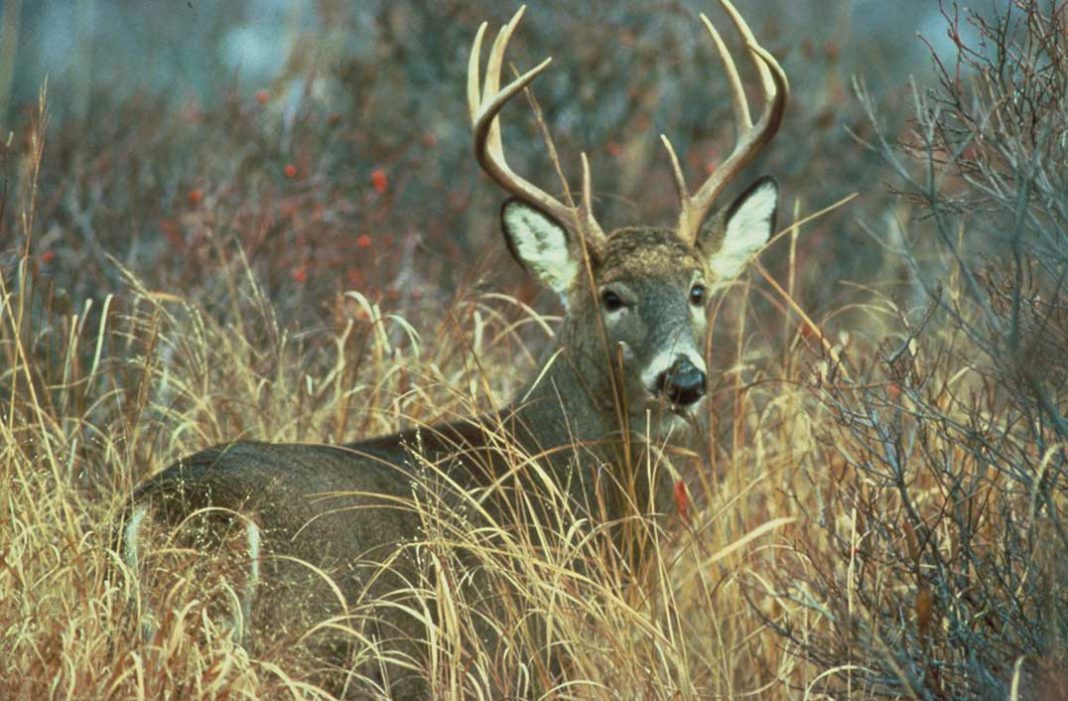PETERBOROUGH—Chronic Wasting Disease (CWD) has the potential to kill entire populations of deer species, and the disease is knocking at Ontario’s door. The threat of CWD reaching Ontario increased substantially in the fall of 2018 when the disease was discovered on a red deer farm in Quebec, almost directly across the border from the Ottawa River.
CWD is a fatal, untreatable disease affecting the nervous system of the cervid species family, which includes deer, moose, elk and caribou.
It was with this in mind that the Ontario Federation of Anglers and Hunters (OFAH) focused its annual conference, this past weekend, on saving Ontario deer from CWD.
“In places like Ontario, the time for action is now,” said Matt Demille, manager of the Ontario OFAH Fish and Wildlife Services, in a release. “We can no longer wait on governments to decide CWD prevention is a priority. Hosting this conference is our way of kick-starting the movement needed to force positive change.”
“In talking, all the speakers on hand talked told us prevention, prevention, prevention is the key,” said Keith Munro, a wildlife biologist with the OFAH. He said the OFAH brought together CWD experts and organizations from across Canada and the United States in Toronto this past weekend to raise awareness and to build a strong coalition that can push for CWD action. More than 50 agencies, organizations and interest groups participated, including First Nations, health and medicine, science and research, industry and more.
“Where are we in Ontario in relation to CWD? So far, to the best of anyone’s knowledge Ontario is CWD free,” Keith Munro, wildlife biologist with the OFAH told the Recorder. Mr. Munro noted that the Ministry of Natural Resources and Forestry (MNRF) has been testing the province for CWD for well over 18 years. “CWD has never been found in wildlife populations,” he confirmed.
“CWD was identified in a deer in Quebec last fall, just 15 kilometres from the Ontario border,” said Mr. Munro. “Ontario really, truly doesn’t want to get CWD. In states and provinces where CWD has been identified it has proven to have significant negative impacts on the deer population and it is a huge drain on fish and wildlife budgets trying to get rid of it.” As well, there are hunter concerns, he said, noting that while it hasn’t been determined if coming into contact with CWD in humans is harmful, “it is highly recommended that you do not eat meat from a CWD deer. No one is comfortable to say there are no risks to humans who come in contact with CWD.”
“We are looking to keep Ontario CWD free and we need to take the steps necessary to keep it out,” said Mr. Munro. “(At the the OFAH conference) we had a host of speakers from around the US and Canada providing information from different points of view and aspects of the disease. They provided a lot of knowledge and information that we found very valuable.”
This included information on CWD, the impacts it has and how to keep it out of Ontario. “In some provinces and states the reality is that they will never get rid of CWD,” said Mr. Munro, noting one of the speakers was a hunter who detailed what it is like to hunt in an area that has CWD in its deer population.
“We discussed where we need to go from here and the steps that need to be taken to keep CWD out of Ontario,” continued Mr. Munro. “We want to carry the momentum forward. “We had huge participation from groups from British Columbia, Alberta, Saskatchewan, Manitoba, Ontario, Quebec, Michigan, Wisconsin, Pennsylvania and New York. Over 50 organizations were represented, fish and wildlife, OFAH, agriculture associations, tourism, Indigenous, public health and government.”
“We will now take all the contents from what we heard and the information we gathered and put this into a report and work together to hopefully keep CWD out of Ontario,” said Mr. Munro. He noted one of the recommendations include calling on the government to prohibit the movement of live captive cervids into and through Ontario and phasing out existing deer farms with adequate compensation provided to the farmers. “And to look at getting regulations changed—for instance, deer urine and deer sprays and scents can carry CWD infectious agents. They are illegal to use by hunters to attract deer, but they can be used in Ontario for those who want to photograph deer. Laws need to be strengthened.”
He said the only tests that can prove CWD in deer is by investigating the brain of a dead deer or from the lymph nodes in a dead deer.
“It was really exciting to have the range of groups and speakers that we had at the conference,” said Mr. Munro. “The message going out, from all speakers was prevention being the key.” He noted, except for the state of New York, no area that has CWD has been able to get rid of it.”
“I’m very optimistic after this conference, everyone on hand gets it, that CWD needs to be kept out of Ontario,” said Mr. Munro. “We have great momentum and there is more awareness out there and this will hopefully filter down. We want to make the changes needed and to prevent CWD from getting into Ontario.”





